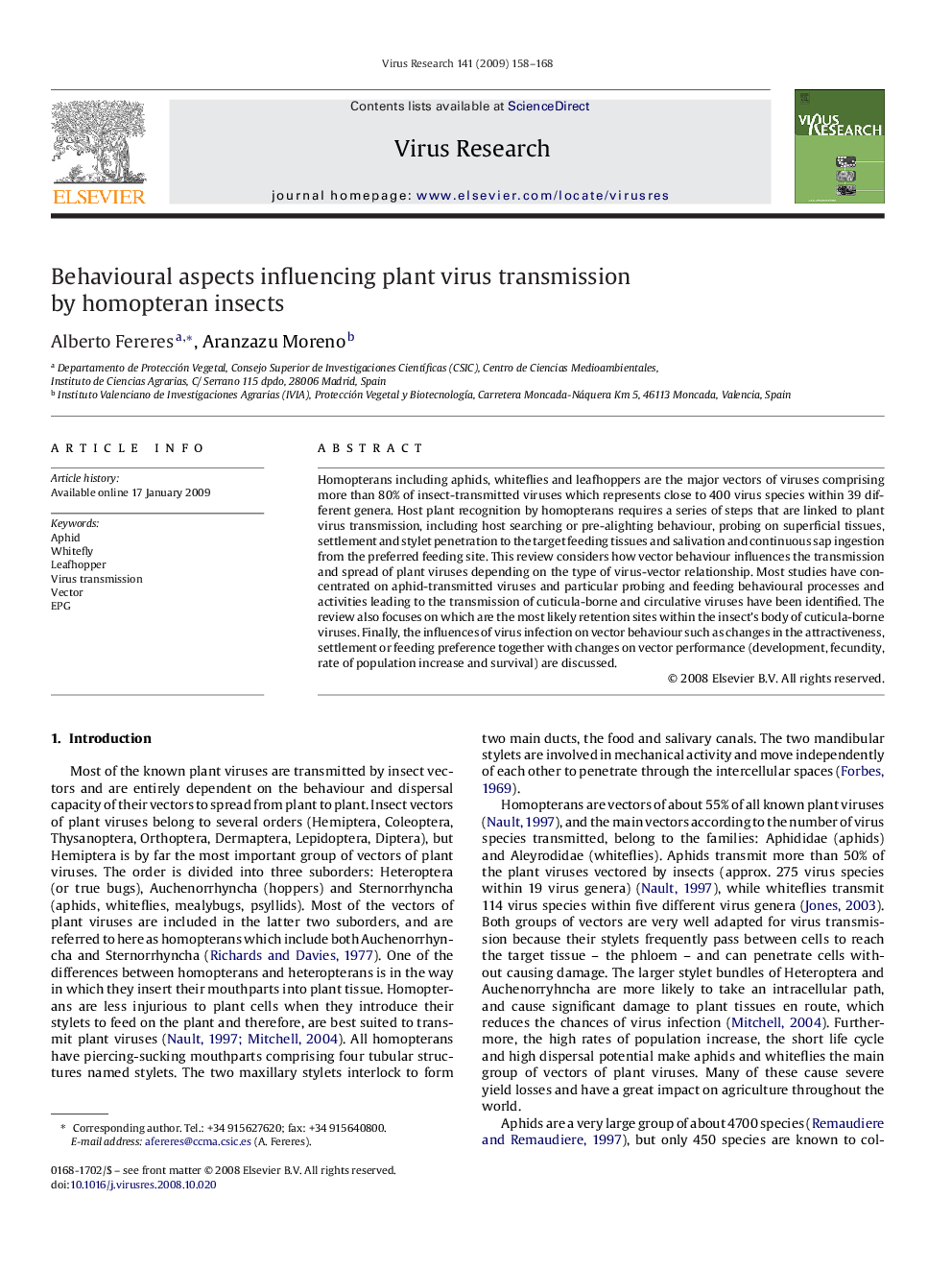| Article ID | Journal | Published Year | Pages | File Type |
|---|---|---|---|---|
| 3430189 | Virus Research | 2009 | 11 Pages |
Homopterans including aphids, whiteflies and leafhoppers are the major vectors of viruses comprising more than 80% of insect-transmitted viruses which represents close to 400 virus species within 39 different genera. Host plant recognition by homopterans requires a series of steps that are linked to plant virus transmission, including host searching or pre-alighting behaviour, probing on superficial tissues, settlement and stylet penetration to the target feeding tissues and salivation and continuous sap ingestion from the preferred feeding site. This review considers how vector behaviour influences the transmission and spread of plant viruses depending on the type of virus-vector relationship. Most studies have concentrated on aphid-transmitted viruses and particular probing and feeding behavioural processes and activities leading to the transmission of cuticula-borne and circulative viruses have been identified. The review also focuses on which are the most likely retention sites within the insect's body of cuticula-borne viruses. Finally, the influences of virus infection on vector behaviour such as changes in the attractiveness, settlement or feeding preference together with changes on vector performance (development, fecundity, rate of population increase and survival) are discussed.
